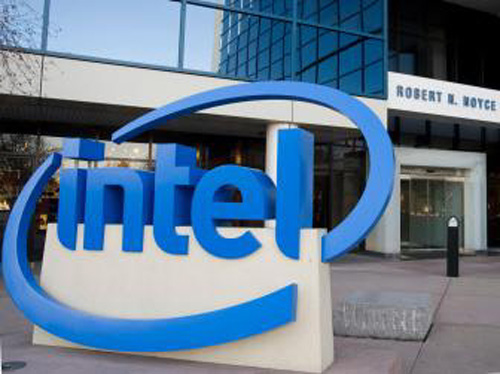Failure of a new business in the CPU slump … - The question of sustainability is the question of sustainability.
Park Seul Gee | seul@ | 2017-10-13 11:09:44

[Photo of Intel HQ]
Dark clouds filled the future of Intel. In order to prevent the stagnation of the CPU business for the past three decades, it has been expanding into a memory semiconductor business in about 30 years, but it has failed to achieve its results.
According to the industry, Intel`s second quarter showed better results than last year`s performance, but Intel`s results are not bright. This is because the world`s semiconductor market has been subjected to the humiliation of losing the world`s No. 1 market share and has failed to establish a future growth project.
Recently, we have been abandoning various businesses that we have been trying to keep up with next year`s food, and we are lagging behind our new business competitiveness.
Intel has introduced SSDs with a three-dimensional (3D) cross-point (X) memory semiconductor that is 1000 times faster than existing NAND flash memory to capture the fast-growing solid-state drive (SSD) market. However, in the second quarter of this year, Intel`s market share in the global SSD market was 18.6%, which was half of that of Samsung Electronics (30.6%). Intel has begun producing 64-step 3D products this year to compete in the late NAND flash business, but it has taken a 7.0% share of the global NAND flash market in the second quarter of this year and has been working with Samsung Electronics, Toshiba, Western Digital, Micron and SK Hynix The situation is lagging behind.
Intel is also strengthening its foundry business, but its presence in the market is minimal. Last year, the company established a foundry business unit last year, but Intel`s foundry share was only 0.32 last year, placing them 22nd on the list
In particular, Intel is trying to increase its foundry customers by purchasing a design license from ARM, a competitor of the UK semiconductor company, but the 10 nanometer micro fabrication process continues to be delayed and the foundry business is also at a standstill.
Intel has been pointed out that Intel is slowing down its performance by mass-producing a new central processing unit (CPU), which was planned to be applied to the 10-nm process, at 14nm. Expert forecasts that commercialization of Intel`s 10-nm process is currently unclear, as the process technology becomes finer and technology barriers increase. Taiwan TSMC and Samsung Electronics announced that they will start mass production of 7nm process from next year. Even if Intel succeeds in commercializing 10nm, it is not enough to secure competitiveness as it is in late buyers.
In addition, Intel is giving up on business that has made a new breakthrough. The company has been concentrating on the wearable equipment business since acquiring the 2015 smart watch maker Basis and the 2015 Retail Augmented Reality (AR) smart glass maker Recon, but it has been reported to have completely stopped the business since last year.
Intel has also announced plans to develop wireless PC products, but it is said it has closed its business last year for a year. Although the company released its wireless PC as a next-generation strategic business in 2015, it is interpreted that it abandoned it because it could not guarantee its performance due to shrinking PC market and intensifying competition.
Intel says there are a number of new businesses that can jump again, including autonomous vehicles, Internet (IoT), 5G communications, and AI. However, Intel has been delayed in the 4G mobile communication market and has been in the mobile CPU market for Qualcomm and Samsung. In the autonomous mobile market, it has to compete intensely with competitors such as Nvidia, Qualcomm and Apple. An industry observer said, "Apple may be able to hurt Intel`s profits as it is reported that it will introduce its own CPUs to the Mac PC." It seems hard to find the answer to the question of Intel`s next growth products. "
By Park Seul Gee seul@
